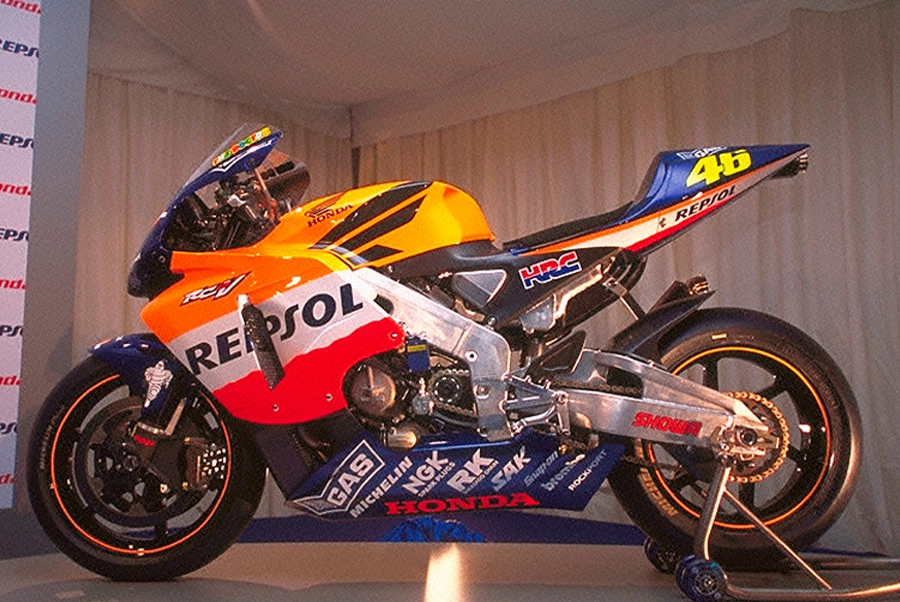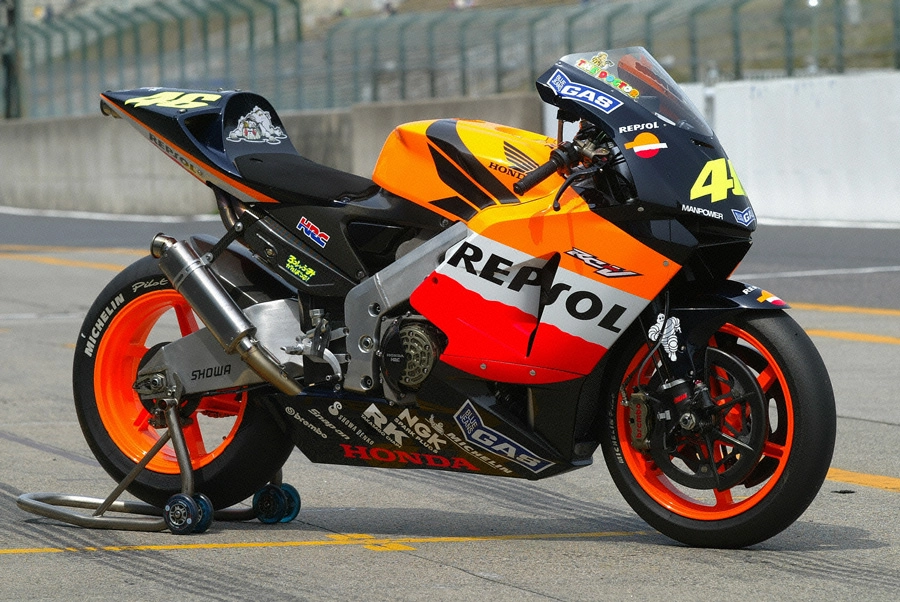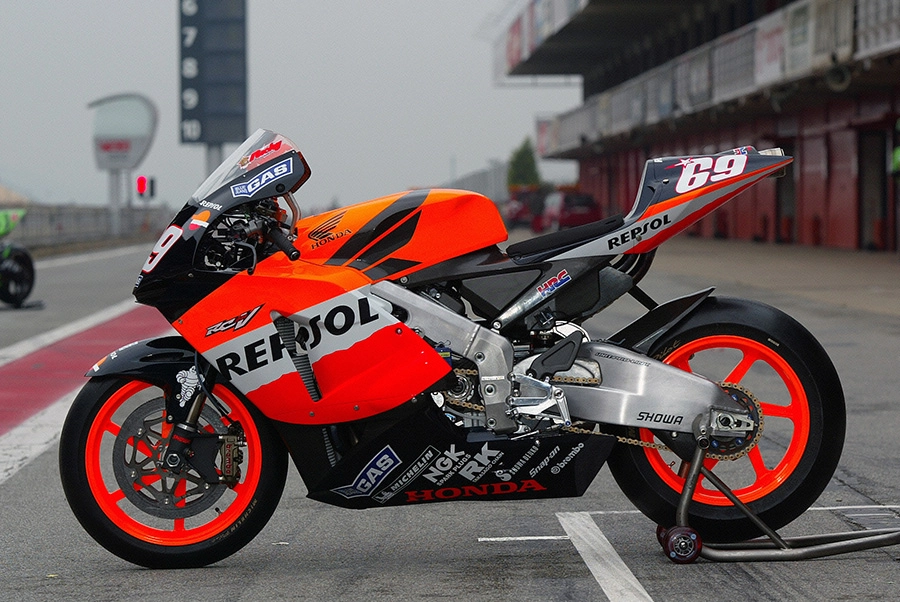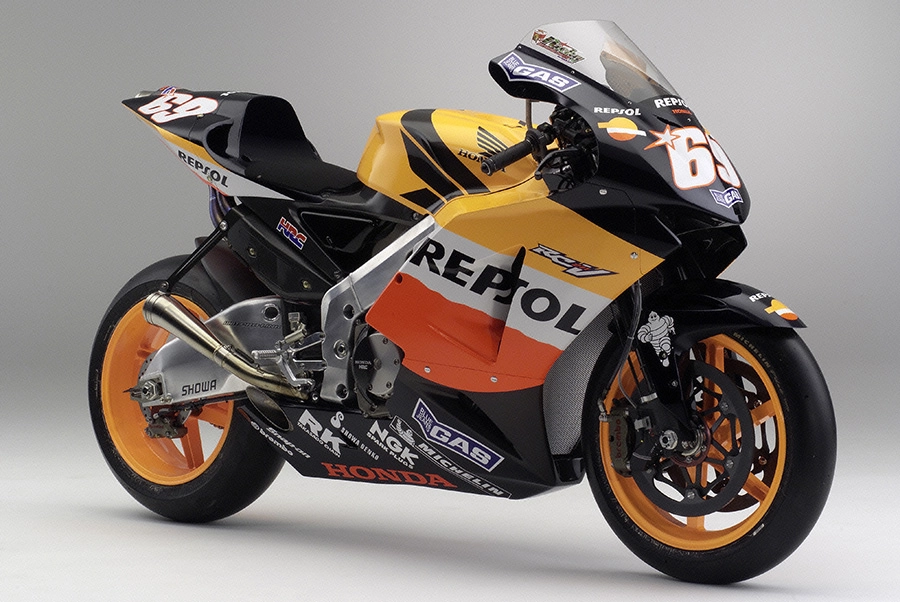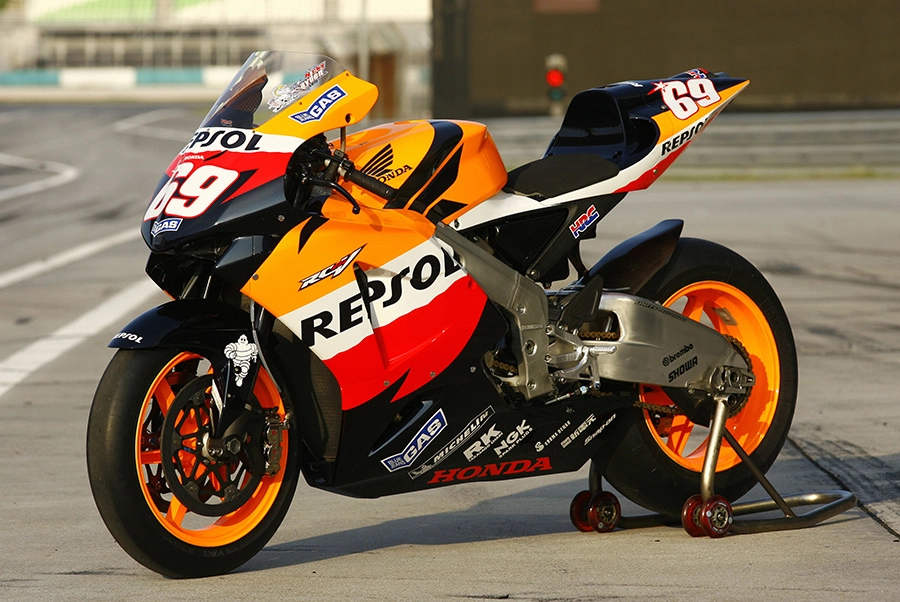
What is MotoGP?
In the motorcycle world, racing competitions on paved race courses are called road races, with the peak series called the Road Racing World Championship, also commonly known as the World Grand Prix Road Race. This series offers four classes as of 2024 (MotoGP, Moto2, Moto3, and MotoE), with each running their own world championships with rider, constructor, and team titles. (As a one-make championship, MotoE offers rider and team titles only.)
Machines used in the Road Racing World Championship are specially designed for road racing, rather than being competition-modified versions of normal street bikes. The MotoGP, Moto2, and Moto3 classes use four-stroke naturally aspirated engines. The major difference between these three classes is engine displacement, with MotoGP using 1,000 cubic centimeter (cc) engines, Moto2 using 765cc engines, and Moto3 using 250cc engines.
MotoGP is the pinnacle of the motorcycle road racing classes, with five motorcycle manufacturers competing in the MotoGP World Championship race series as of 2024. A number of regulations have been established to keep excessive cost increases to a minimum. However, MotoGP allows considerable freedom of development in terms of the basic elements of engine and chassis, so competing motorcycle manufacturers are able to apply their own thoughts and technologies to create unique machines. MotoGP machines only compete in MotoGP World Championship races.
2024 Austria Grand Prix

First MotoGP Technical Regulations (From 2002)
For many years, the 500cc class was the top class in the Road Racing World Championship. Machines competing in this class could have maximum engine displacement of 500cc, with either four-stroke or two-stroke engines possible as long as displacement was 500cc. With twice the opportunity for ignition, this naturally meant that the two-stroke machines could achieve higher engine output than the four-stroke machines. For this and other reasons, two-stroke machines were used exclusively in the 500cc class from the middle of the 1970s. (Despite this, Honda dared to compete with a four-stroke machine, using its NR500 oval-piston engine between 1979 and 1982.)
By the mid-1990s however, there were almost no street bikes with two-stroke engines, which produce exhaust with high levels of carbon monoxide and hydrocarbons, being sold to the general public. This naturally flowed on to the motorsports world, which began to move in line. At this point, the mainly four-stroke machine MotoGP was introduced as a new top class to replace the 500cc class.
Under the technical regulations for MotoGP, two-stroke machines were allowed. However, four-stroke machines were given an advantage to encourage all entrants to make the shift to four-stroke engines. Two-stroke machines also competed during the 2002 season, which was the first year under this class, but all machines from the 2003 season onward used four-stroke engines.
MotoGP technical regulations at the launch of this class stipulated a maximum displacement of 990cc and maximum fuel tank capacity of 24 liters for four-stroke machines. Minimum weight of the machines was set according to the number of engine cylinders, with 3-cylinder engines or smaller set at 135 kilograms (kg), 4- and 5-cylinder engines at 145 kg, and 6-cylinder engines and larger at 155 kg.
As of 2024, all MotoGP machines are using the same specifications for electronic control unit (ECU) hardware and software, and tires. However, the first MotoGP technical regulations allowed manufacturers freedom to develop their ECUs and to choose their tires (manufacturer and products).
2002 MotoGP (Aprilia, Suzuki, Honda, Yamaha)

Manufacturers’ Various Engine Specifications in First Season of MotoGP
During the 2002 season, which was the first year of MotoGP, Honda, Yamaha,
Suzuki, Aprilia, and Kawasaki (competing from the end of the season) all ran
machines with four-stroke engines. What was interesting about the machines was
the cylinder layout chosen (see below), which varied greatly by
manufacturer.
■ Manufacturers that chose in-line four-cylinder engines: Yamaha, Kawasaki
■ Manufacturers that chose in-line three-cylinder engines: Aprilia
■ Manufacturers that chose V4 engines: Suzuki
■ Manufacturers that chose V5 engines: Honda
The different choices reflect technical regulations that set different minimum machine weights according to the number of engine cylinders. Another reason is that no manufacturer knew which layout would be the optimal solution under the completely new regulations. Honda chose the V5 layout not only because the higher cylinder number would make it easier to increase engine output, but also because the V5 layout would enable overall engine shape to be rounded, which had advantages in terms of the packaging.
In any case, no previous road racing machine employed such a cylinder layout, so using the V5 layout was the main factor in making the RC211V a MotoGP machine that was truly unique to Honda.
NV5A engine (2002)

Evolution of the RC211V from the 2002 Model to the 2006 Model
Honda’s RC211V motorcycle had engine displacement of 990cc, a V5 engine layout with V-angle of 75.5 degrees, a modified twin-spar frame, and Unit Pro-Link rear suspension. The basic form of these main components remained unchanged through successive RC211V models, from the first model in 2002 to the last in 2006. Nonetheless, Honda Racing Corporation (HRC) continued to make fine modifications to all components, with a range of variations with different specifications being built, even mid-season, and sparing no effort in pursuing better and better results.
During the 2002 season, which was the first year of MotoGP, five motorcycle manufacturers raced their own unique MotoGP machines. Of them, Honda’s first RC211V model (type NV5A) produced outstanding results, winning 14 out of the 16 races held that season. Even so, HRC was aware of a number of issues with the NV5A that needed fixing, so in addition to boosting engine speed and output, it made a number of changes for the 2003 model NV5B that dramatically improved riding performance. They included a huge reduction in back torque (torque conveyed from the rear wheel back to the body, which is generated by the engine brake significantly reducing rear wheel speed), reduced rear wheel hopping under brakes, and use of an easy-to-operate lightweight, compact rotary steering damper. As a result, Honda achieved the triple crown for the second consecutive year, with the rider, constructor, and team titles.
The 2004 NV5C type came with improved engine control through the Honda Intelligent Throttle Control System (HITCS), which was HRC’s own electronic throttle control system, and improved traction performance due to major changes to the design of the Unit Pro-Link rear suspension. With the 2005 NV5D type, HRC not only worked to further mature the machine through efforts such as refining the HITCS control, but it also explored new possibilities by building and testing engines and chassis with different specifications.
HITCS structural diagram

Although losing the rider’s title in the 2004 season, Honda managed to win the constructor’s title for the third consecutive year. Unfortunately, Honda failed to win either the rider’s or the constructor’s title for the first time in the 2005 season. For this reason, HRC developed two versions of the RC211V for the 2006 season, which was the final year of the 990cc regulations, to win back the titles by whatever means possible. One version was the NV5HD as a normal evolution of the previous model, while the other was the NV5HG with a brand new engine and frame to hold it.
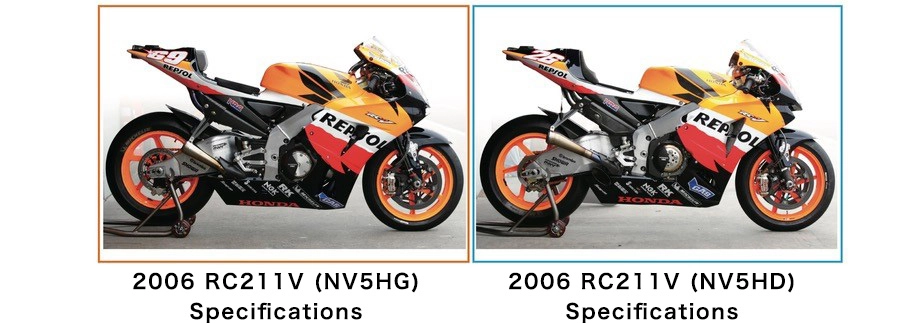
HRC staff referred to the NV5HG as the “new generation.” While maintaining the same V5 cylinder layout as always, the machine itself underwent a comprehensive redesign to reduce size, with a new frame to match making the overall design more compact. These major changes resulted in a reduction in the moment of inertia. The NV5HG wheelbase was also the same as the NV5HD, which was a normal evolution model (referred to as the “original” by HRC staff), but the compact frame allowed the swing arm pivot to be positioned further forward. This enabled use of a longer swing arm on the NV5HG, which lead to improved traction performance. A second-generation evolved HITCS electronic control throttle was also used on the NV5HG. Through these development efforts, Nicky Hayden won the rider’s title for Honda as the sole rider of the new-generation NV5HG. HRC also won back the constructor and team titles in the 2006 season to close out the MotoGP 990cc era with the RC211V.
2006 Italian Grand Prix

